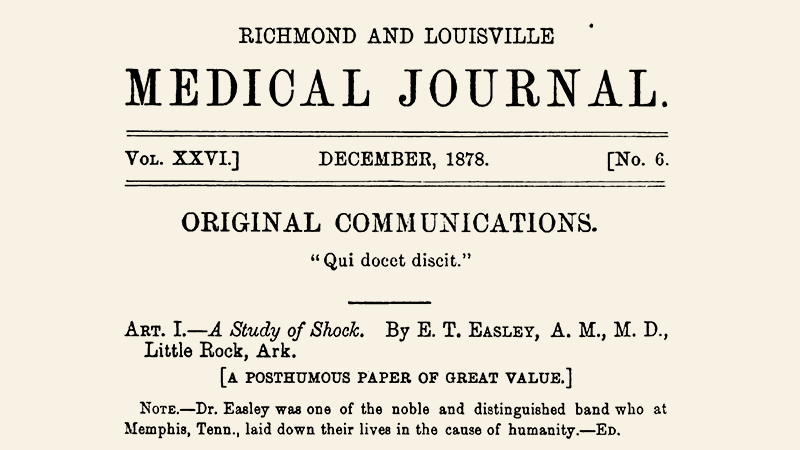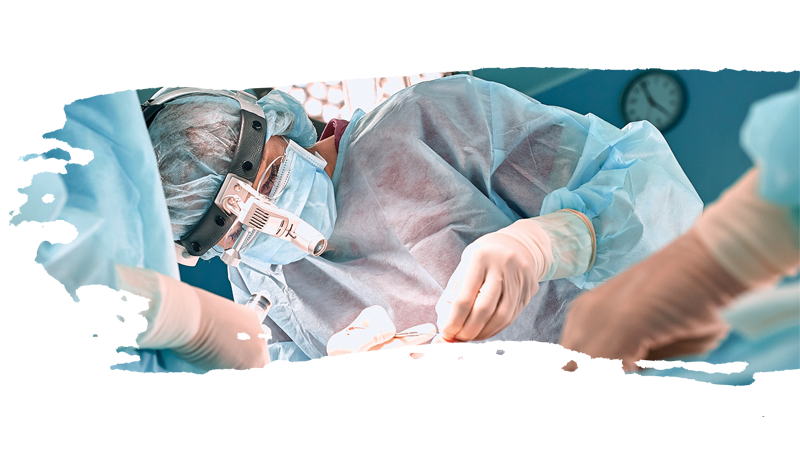In September 1878, a young Arkansas surgeon named Edward Tandy Easley, MD, became ill in Memphis, TN. A graduate of the Louisville Medical College in Kentucky and Civil War veteran, Dr. Easley left his practice in Little Rock, AR, to volunteer in the city during a yellow fever epidemic. Overwhelmed by the sick and dying, in a “state of utter desolation,” he wrote a letter to a friend, stating, “The facts are worse than the newspaper accounts” and that quarantines were needed to keep the epidemic from spreading further.*
Dr. Easley succumbed to yellow fever on September 30, cutting short a meteoric surgical career that, in less than 4 years, had seen him elected secretary of the American Medical Association surgical section and author of 18 publications. His posthumous final paper addressed a topic of significant concern—shock. To the 19th century surgeon, shock was an ever-present yet elusive foe. In a time when diseases were largely understood by the pathologic changes they left in tissues, shock—a functional rather than structural disorder—defied attempts at characterization.
His contemporaries saw shock as a bottom-up phenomenon—an injury to the body that disrupted the central nervous system, leading the heart to fail—whereas Easley took a more top-down approach. While allowing for shock from injury, Easley’s model also gave thoughts, perceptions, and emotions the same power to harm as the force of a bullet. “That joy, grief, and terror may produce every degree of mental or nervous shock, is a fact both rational and well attested,” he noted.† The mind created bodily reality. It could not only slow or stop the heart, but it also had sufficient power to degrade the blood, poisoning its character and rendering it incapable of sustaining life. If emotion were of sufficient intensity, Dr. Easley argued that there were “many authentic cases recorded” of the rupture of the heart itself, “consequent on tremendous mental agony” and terminating in fatal shock.†
During an era when surgery began looking to statistics for proof, Dr. Easley was an anachronism. While he saw value in numerical data, Easley also relied on metaphor, rhetoric, and literature.‡ He wrote that the “genius of Shakespeare” was revealed in his description of how shock produced Lear’s madness; he cited the biblical gospels as evidence that mental anguish alone could lead to death. “Sorrow, uncomplicated, sometimes kills outright,” he noted, adding, “[It] so paralyzes the functions of the brain and heart that the sufferer can no longer live.”†
Dr. Easley’s writing came at a time when surgeons were trying to understand diseases, such as shock, without access to the physiologic language and concepts we use today. It remains a useful case study in how the profession approaches problems that do not fit well into its existing theoretical models.










